AIR CONDITIONING JOINT DUAL O-RING SYSTEM

MODELS AFFECTED: 1989 DE VILLES AND FLEETWOODS
The 1989 DeVilles and Fleetwoods use a new O-ring joint design for the A/C system which will increase durability and reliability of the joint seal by providing a second O-ring seal. The dual O-ring fitting design (refer to Figure 1) consists of:
Aluminum alloy externally-threaded fitting which is brazed or welded to an aluminum tube.
Free spinning, plated steel, internally-threaded nut.
Precisioned machine male piloted aluminum tube end which accommodates two O-rings.
Servicing the Dual O-Ring Joint:
When servicing the dual O-ring joint use the following procedure:
CAUTION:
Make sure A/C system is completely discharged.
1. Use Kent-Moore tool, J-38042 Dual O-Ring Disassembly Tool, to separate the joint while loosening the female nut. Refer to Figures 2, 3, and 4.
2. Remove and discard 0-rings. Use non-metallic tool when removing 0-rings to prevent chance of damaging seal surface.
3. Replace O-rings. Avoid excessive stretching and twisting of replacement O-rings.
IMPORTANT: Dual O-ring fittings use a different size O-ring from standard A/C joint fittings. Refer to Figure 5.
4. Reassemble O-ring joint. Carefully align forms (tubes) for pilot to bore insertion and push together completely. Refer to Figure 6. Slightly oiling the bore and O-rings with refrigerant oil will aid insertion.
5. Torque steel nut to 15-20 ft. lbs.
NOTICE: The use of proper wrenches when loosening or making corrections is important. A backup wrench should be used on the brazed or welded fitting to prevent distortion of A/C lines.
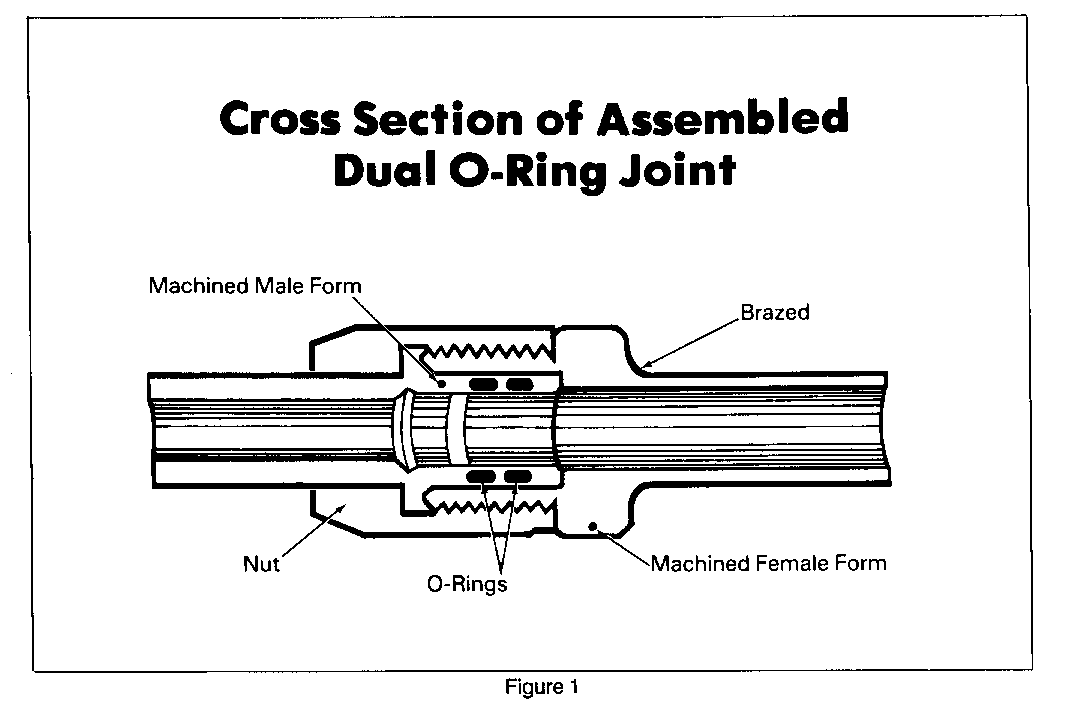
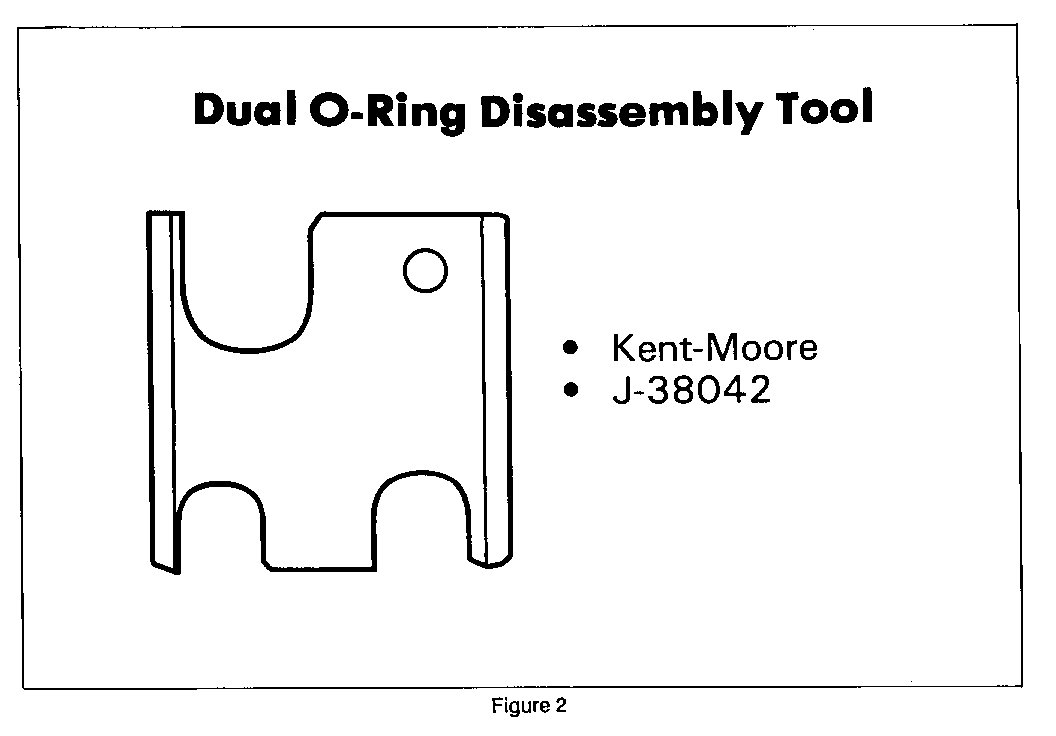
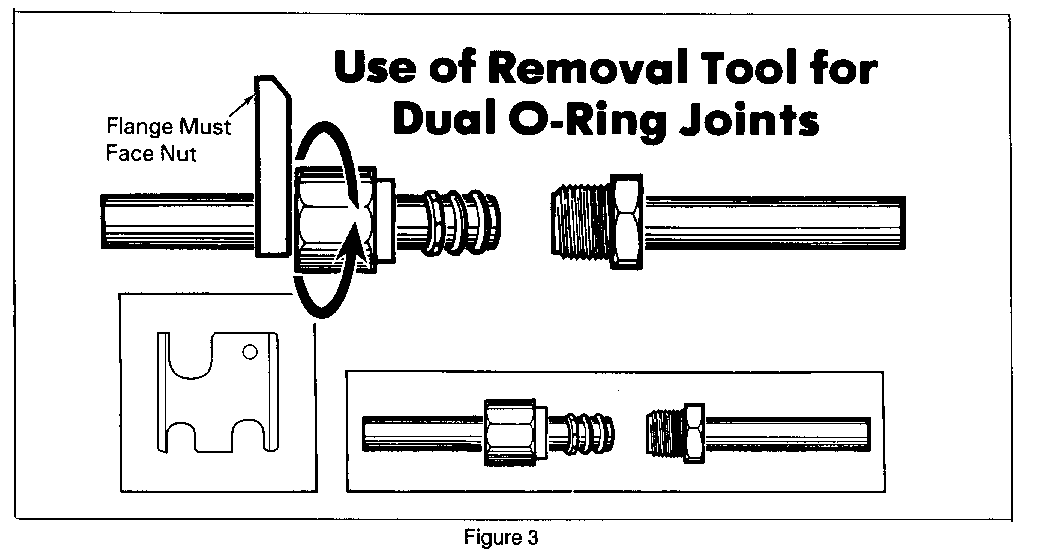
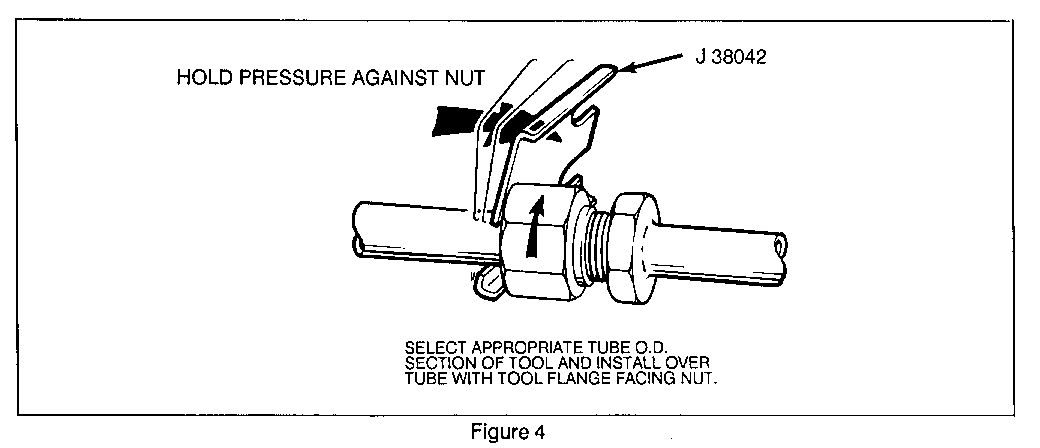
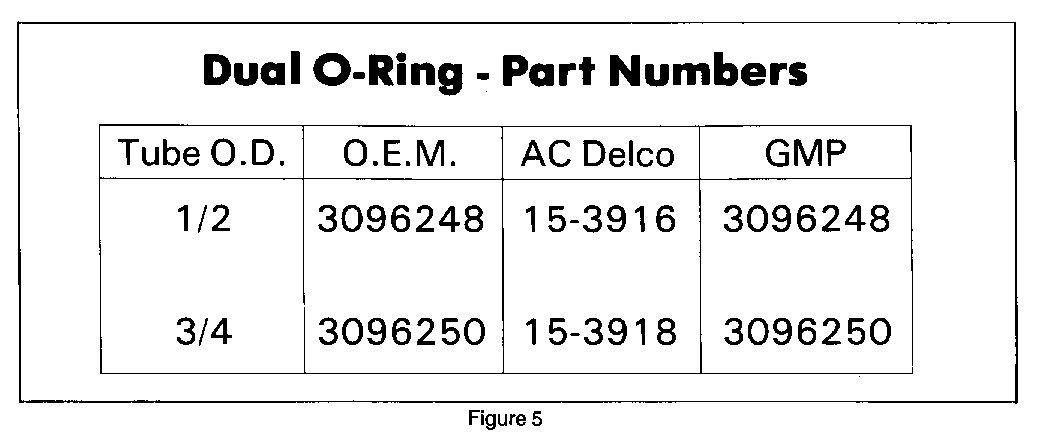

General Motors bulletins are intended for use by professional technicians, not a "do-it-yourselfer". They are written to inform those technicians of conditions that may occur on some vehicles, or to provide information that could assist in the proper service of a vehicle. Properly trained technicians have the equipment, tools, safety instructions and know-how to do a job properly and safely. If a condition is described, do not assume that the bulletin applies to your vehicle, or that your vehicle will have that condition. See a General Motors dealer servicing your brand of General Motors vehicle for information on whether your vehicle may benefit from the information.
